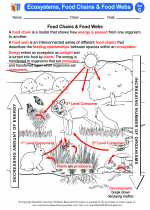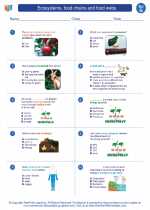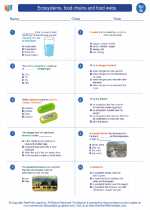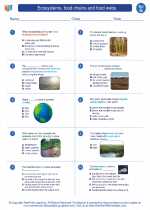Worms: An Introduction
Worms are a diverse group of invertebrates that belong to the phylum Annelida. They are found in various habitats including soil, freshwater, and marine environments. Worms play important roles in ecosystems as decomposers, aerators of soil, and as a food source for other animals.
Types of Worms
There are three main types of worms that are commonly studied:
- Earthworms: Earthworms are commonly found in soil and play a crucial role in soil health and nutrient cycling.
- Roundworms: Roundworms, also known as nematodes, are found in a variety of environments including soil, freshwater, and marine habitats.
- Leeches: Leeches are freshwater or marine worms known for their blood-feeding behavior.
Anatomy of Worms
Worms have a simple body structure with a tube-like shape. They typically have a head end and a tail end, and their bodies are made up of repeated segments called "metameres."
Earthworm Anatomy
An earthworm's body is divided into segments, with a distinct head (anterior) and tail (posterior) end. They have specialized structures called "setae" that help them move through the soil.
Roundworm Anatomy
Roundworms have a cylindrical body with a distinct mouth and digestive system. They also have a protective outer covering called a cuticle.
Reproduction and Life Cycle
Worms reproduce through both sexual and asexual means, depending on the species. Some worms are hermaphroditic, meaning they have both male and female reproductive organs.
Earthworm Reproduction
Earthworms mate by aligning their bodies and exchanging sperm. After mating, they form a cocoon where eggs are fertilized and develop into juvenile worms.
Roundworm Reproduction
Roundworms also have sexual reproduction, with males transferring sperm to females. They can also reproduce asexually through processes like parthenogenesis.
Importance of Worms
Worms play crucial roles in ecosystems and have significant ecological and agricultural importance. They contribute to soil health, nutrient cycling, and are used in vermicomposting to recycle organic waste.
Study Guide Questions
- What are the main types of worms and where are they commonly found?
- Describe the anatomy of an earthworm and a roundworm.
- How do worms reproduce and what are the different reproductive strategies?
- Explain the ecological importance of worms in soil health and nutrient cycling.
◂Science Worksheets and Study Guides Seventh Grade. Ecosystems, food chains and food webs

 Activity Lesson
Activity Lesson
 Worksheet/Answer key
Worksheet/Answer key
 Worksheet/Answer key
Worksheet/Answer key
 Worksheet/Answer key
Worksheet/Answer key
 Vocabulary/Answer key
Vocabulary/Answer key
 Vocabulary/Answer key
Vocabulary/Answer key
 Vocabulary/Answer key
Vocabulary/Answer key
 Vocabulary/Answer key
Vocabulary/Answer key
 Vocabulary/Answer key
Vocabulary/Answer key
